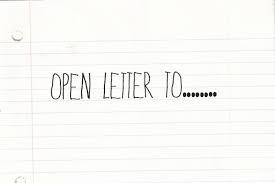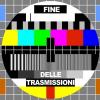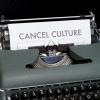Dear Hollywood,
We write for the attention of all Hollywood producers, writers, and most certainly directors of horror cinema over the last couple of decades. Quite a lot of you have been responsible for a serious crime, too-often committed against us, the paying horror audience: incompetent and complacent film making. The growing laziness in the genre has become more and more obvious, certainly since the turn of the millennium. We wish to address this by taking a look at some of the major errors you tend to make; horror from the rest of the world does not seem to make these mistakes, and so there is no reason you should:
Anyone can make us jump
The Woman in Black, starring Daniel Radcliffe...Okay so we all love a good jump here and there; trust us, we really do! It is a great moment when you are sat there... tense, curious, nervous... and then BANG, the 'thing' happens and the entire screen (hopefully completely rammed, because this movie is supposed to incredibly epic) jumps and screams in unison. Indeed, it brings about an immediate sense of togetherness - camaraderie, if you like, and the relief laughter and chatter is a very pleasing sound that nobody will ever moan about.
It should be remembered, however, that this can very quickly be overdone (I’m looking at you, The Woman In Black), and in fact even with the jump-scares you do use, you need to be careful that they do not become cheap or unrealistic; the last thing we want is to be immersed in the atmosphere of a scene and for the wrong thing make us jump.
You think this means we feel more scared, but sometimes the opposite is actually true; a badly-judged jump-scare will certainly make us jump, but will be followed closely by laughter, leaving us detached from both the horror and the film.
Why does this happen? It all comes down to whether the jump works as part of the story, and as part of a particular scene. Frank Darabont, speaking about one particular jump-scare in his adaptation of Stephen King’s The Mist', said that it was “the oldest trick in the book” that got the author leaping from his seat when watching it for the first time.
Brilliant...he thinks he made Stephen King jump; but with that quote he does actually hit the nail on the head! We all know the jump-scare can be used to good effect, because it is indeed “the oldest trick in the book”: the frame is set and then something bursts into it unexpectedly.
The thing is we can all make somebody jump, it is very simple; jump out on them, or sneak up behind them when they are not expecting it and say boo really loudly. That is great, and fun, but ultimately not scary in the long-term. It should also be pointed out that film makers with actors, make-up, lighting, set design, hopefully a scary story to tell, and a long list of other tools to hand should not be resorting to a simple little trick - one readily available to us at home - before hoping that a barrage of the same trick will send us home with a need to tell everybody how frightening the film is.
We won’t.
Hollywood, if that's all you have to offer then I can promise you we will be talking about it at home...just not in the light you may have hoped.
"Using a jump as a pay-off to a building of tension gets tired after a while - trust us"
Please understand this is not to suggest we do not like the occasional good jump. For instance, a film like Rec has just the right amount of jumps peppered through, but the creation of tension envelops the moments rather than providing a build up. The result is that we find ourselves totally shaken by the superb jump, but not off the hook, as the dread continues to build. Using a jump as a pay-off to a building of tension gets tired after a while - trust us.
Enjoy the silence
It is one of the most basic principles of cinema: the soundtrack aids the emotional drive of a movie. It tells us when to feel certain feelings, amongst other things. Sadness, longing, excitement, tension, and yes, even fear! You have heard of the expression, “over-egging the pudding” though, yes? Any film that is over-scored is annoying; but in the realm of terror, it can very easily dispel the fear rather than enhance it. There are some truly terrifying moments in cinema from around the world that work because they understand that silence can be deafening in the right circumstances.
An open letter to Hollywood Horror...Take A Tale Of Two Sisters for example - this contains one of the most chilling bedroom sequences in a horror film since Poltergeist; and take note of the fact that the director does not insist on bashing you over the head with a discordant orchestra sting because “that it will amplify the scare", but in fact relies purely on the natural sounds of the room. Likewise, in another scene, the atmosphere is deathly-cold and incredibly tense, through nothing more than the excellent sound of wind.
In silence, we are tense; we are waiting for something awful, and that natural sound of what is around us, even if it's pure silence, can be deafening and creepier than any piece of music you wish to add to the scene.
Music enhances shocking moments nicely, such as the shower-stabbing in Psycho; but if you go and watch the scene now and take note of the sound that leads up to the moment, what do you notice? A shower running. That is the only sound.
Silence can be your greatest weapon.
Don’t butcher the fear
Alfred Hitchcock's The Birds...When you have all your footage, resist the urge to hack away and re-assemble every last frame. In horror, possibly more so than any other genre, what the camera shows us, what we see and when we see it, could never be more important.
Sometimes the way some of you chuck this stuff together can be mind-boggling, headache-inducing; and, worst of all, not scary. The fear can be found with the right cut at the right time, so keep away from the editing studio...
Take a little look at The Birds. Do we really need to mention that classic scene that is simply one woman sat on a bench while we know the birds are gathering? We don’t need to see it; we can already sense what's going to happen. That way, when the shot is finally panned into view, the true horror of the situation - that is, a climbing frame crammed with birds - confirms our fears and raises the suspense to unbearable levels.
One of the greatest examples from overseas is most certainly Ju-On: The Grudge. I can barely put into words the feeling of realising that creepy little kid is peering through the banister; he’s been there for how long? Fear presents itself through the unknown and Ju-On: The Grudge makes full use of the fact.
Many of you have taken heed of this already, as shown in the recent Insidious, which, despite its silly final act, does very well in this field. Likewise with The Strangers, there is a moment in the kitchen which is very successful.
Not everyone gets it right though; Gore Verbinski’s take on The Ring features a re-working of the most frightening sequence in the original, and makes a complete hash of it by having no sense of pace.
Getting the cut right is a big part of the challenge.
"Get us to care about something, anything, and you will drive the fear deeper..."
Nothing scarier than the imagination
Served as an accompaniment to the previous point, this was a notion associated very heavily with The Silence of the Lambs, a film which comes to a climax in a room where nothing can be seen. Our heroine Clarice Starling is feeling her way around a dark room, knowing the killer is with her, watching. This works as a nice analogy for a principle of horror that Hitchcock, once again, understood all too well: Often it is what you do not see that is frightening.
Silence of the Lambs...
Remember, our minds are dark closets filled with the most messed up, disturbing thoughts you could imagine, and we love to exaggerate, to go overboard; usually we just need a little push. So you can show us all the monsters, beasts, ghosts, blood and guts you like, and there will be the time and place for that. But you are so frequently better off giving us a just a taste of it, a hint of what it is we are to be scared about - and then leave us to fill in the blanks.
Remember, The Blair Witch Project? With no need to pander to anybody, they kept everything low-key and ridiculously simple. It could even be argued that Blair Witch is not technically a great film - but with the marketing campaign giving it a head-start, it became the most effective American horror of the decade. Admittedly it hinges on whether you play along with the notion of being lost in the woods; but at no point do we see the antagonist; at no point do we even know what it/she is. Instead we hear the right things at the right times, and we watch as a woman runs through the woods, clearly having seen something that we cannot. And it is horrible!
H. P. Lovecraft has been a long-standing example of an author who scares the pants off his readers, all of whom find it extremely difficult to tell you why they are scared. We all wait on tender-hooks for the possible Del Toro production of At The Mountains of Madness, which seems to be under strain; but we shall see.
Put simply, keep it simple Hollywood...let us do your work for you, because we are very good at it.
If we care, we will scare
Since the advent of torture-porn, it has been very easy for people like Eli Roth (a reasonable film maker in his own way) and Rob Zombie (a not so reasonable film maker), to get away with presenting the most turgid, infantile filth, often in the form of the most ridiculous, over-the-top, moronic splatter-fests, and pretend that they have done something really subversive, clever and scary.
The Fly, starring Jeff Goldblum...I have news for people like this: There is no subversion, and there is nothing clever about torture when there is no drive behind it other than the question, “How hideous can people be?”.
We know this already. We see real life happen. As for being scary, both Eli Roth and Rob Zombie admire Audition by Takashi Miike and presumably believe that they are paying homage to a master of the genre, because hey, he did a torture scene too!
Indeed he did, and if you go take a look at that film, you will notice it turns the genre on its head, and consequently the audience; it is a movie that blindfolds us, spins us in fast circles, and tells us to pin the tail on the donkey. It makes us care for the very real characters, so that when the horror finally hits home, it hurts us - and we understand its significance.
Take a look at the Guillermo Del Toro produced The Orphanage or even his own movie Cronos. Both are films that have sincere themes and exploit honest, human fears - the one concerning child death and another the subject of ageing. What does torture-porn talk about?
More often than not the best horror stems from within: our own fears about life, death, and the tragedy that is sometimes being human. There is only so much blood and guts being spilled for its own sake that we can watch before we simply get bored and immune. Themes we care about never tire. They are about us, they are ideas we must care about.
David Cronenberg is a director whose shocking horror remains a triumph by virtue of the revolution he brought about: in 'body horror' - horror of the flesh. Watch The Fly, his re-working of a classic yet simple fable, and witness a master at work. Using the fly metamorphosis as a metaphor for our fear of disease - the horror from which we cannot escape - is a journey into deep-seated terror. To bring that to a point where we are both mortified and heartbroken for a man who has become useless in front of his loved one is truly a stroke of genius.
Stop cheating!With horror often comes a tremendous sense of sadness, or tragedy, emphasising the terror, driving the story home and haunting us for days or weeks. These are the films we talk about; these are the films horror geeks adore. Yes, we enjoy a bit of teen-hacking as much as the next man, but even with films such as A Nightmare On Elm Street, The Last House On The Left or The Hills Have Eyes, you are watching work from a film-maker trying to present ideas that run deeper than the carving-up of flesh; ideas that are supposed to bury themselves in your head and get you thinking. That is one pivotal element of the way these films scare - empathy, sense memory - driving fear deeper.
Stop cheating!
Even the most forgiving horror nerds are becoming frustrated with the endless stream of remakes - often recreated almost shot-for-shot - just because you want to make an easy buck. We are wise to the game, and as much as you might hoodwink a lot of the naive, you are not getting one over on horror fans; we grow tired of your minimalist imagination. Unless there is a writer’s strike, there is no reason for it - it is just cheating and, if we are being honest, the remake rarely has the qualities that made the original so great, notwithstanding how well-made it is.
And renaming it does not make the crime any more forgiveable, so please stop doing it.
Conclusion – Trust us, we have a brain
There will always be a lowest common denominator audience out there - those who cannot keep up with cinema that pushes them to engage their brains beyond that point required to understand the twist of a Saw movie. But that's not a reason to water everything down, resort to cheap tricks and simple, one-dimensional set-ups that do not stay with us for more than five minutes after walking out of the cinema.
Horror is at its best and most terrifying when it has a brain. The frustrating thing is that the history of cinema from the West shows that there have been those artists who have understood the above-mentioned. So what has happened?
You can take this as an appeal to the darkest part of your hearts, and the smartest, most twisted corners of your collective imagination that quietly crave to be more daring: Stop playing it down for the simple-minded audience all the time and start proving that which we know, you know, to be true - horror can be so much more than “slash and hack”.
"We want the real monsters, the intelligence, the tragedy, the sadness and the metaphors"
We need the horror that avoids the tired clichés, the torture porn, the over-cutting for the short attention spans, and the predictable jump-scares for those who think that these alone create fear. Alfred Hitchcock did not need such tricks when making The Birds and Psycho; even with Vertigo, which is not a horror movie, Hitchcock was able to create a chilling and genuinely haunting thriller.
William Friedkin, with 1973's The Exorcist, did not need to resort to such banal methods to create what is still regarded, despite its relative crudity when compared with modern films, as one of the greatest horror movies of all time.
David Cronenberg, the director who showed you how to use visual metaphor to explore the most horrendous themes, is a man whose horror work was heralded as brilliant simply for being high-brow, for being about concepts of the fear within, the horror of identity, the very real terror that comes simply with being human. He made films about ideas for the most deeply-rooted, ugly parts of us to relate to.
We want that sort of horror - it is cleansing, therapeutic and healthy. We want the real monsters, the intelligence, the tragedy, the sadness and the metaphors.
In short, we need the horror that runs deeper than a pint of blood smeared across the screen, in the vain hope it will be enough to keep us awake at night.
Yours faithfully,
The Audience
















